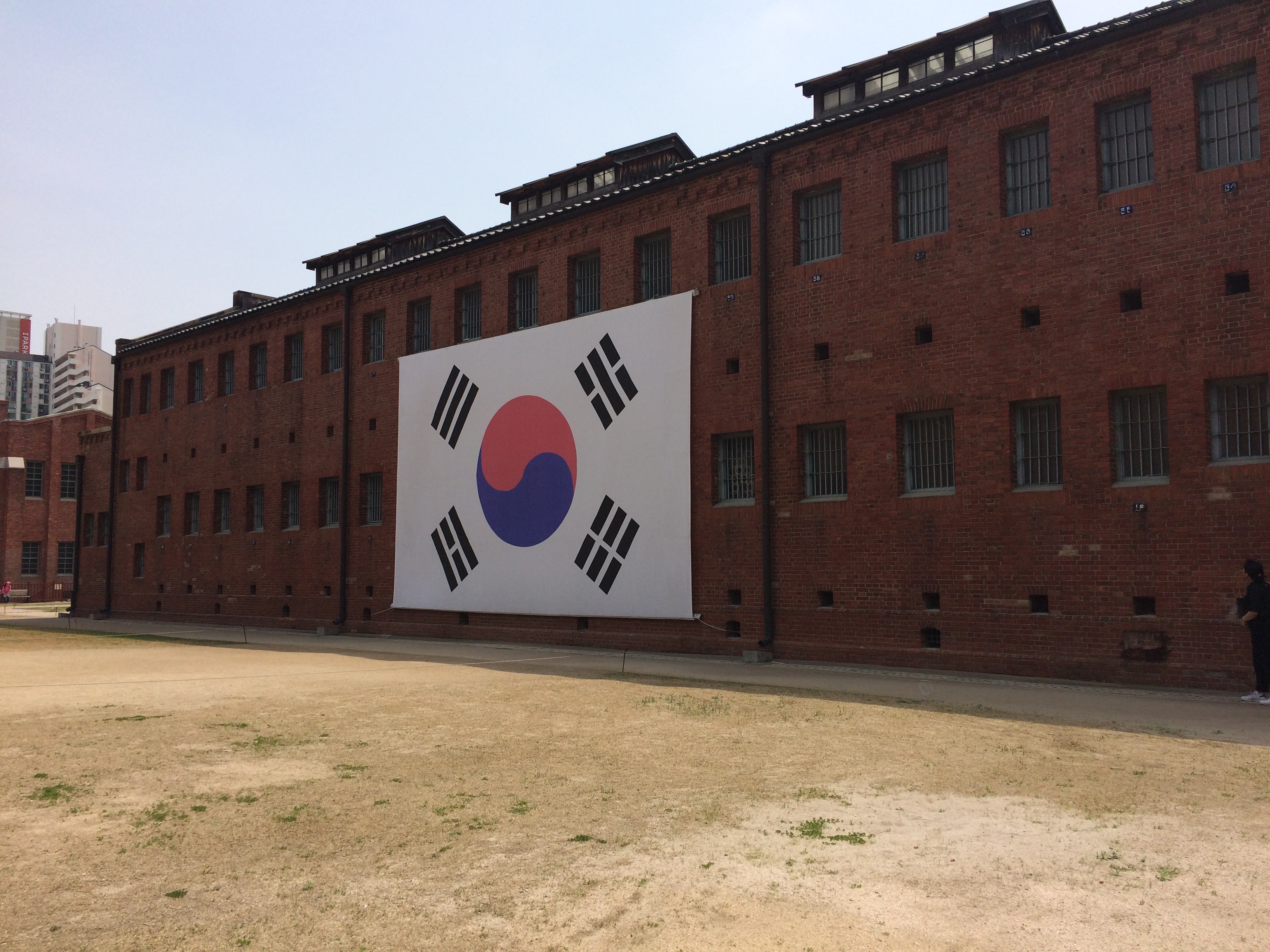Seodaemun Prison on:
[Wikipedia]
[Google]
[Amazon]
 Seodaemun Prison History Hall is a museum and former
Seodaemun Prison History Hall is a museum and former

Seodaemun Prison History HallLifeinkorea profile
Seodaemun District Prison museums in Asia Prisons in South Korea Museums in Seoul Korea under Japanese rule Historic Sites of South Korea Government buildings completed in 1908 History museums in South Korea 1908 establishments in Korea {{Korea-stub Japanese prisoner of war and internment camps
 Seodaemun Prison History Hall is a museum and former
Seodaemun Prison History Hall is a museum and former prison
A prison, also known as a jail, gaol (dated, standard English, Australian, and historically in Canada), penitentiary (American English and Canadian English), detention center (or detention centre outside the US), correction center, corre ...
in Seodaemun-gu
Seodaemun District (, "Great West Gate") is one of the 25 districts of Seoul, South Korea.
Seodaemun has a population of 313,814 (2010) and has a geographic area of 17.61 km2 (6.8 sq mi), and is divided into 14 '' dong'' (administrative ne ...
, Seoul
Seoul (; ; ), officially known as the Seoul Special City, is the Capital city, capital and largest metropolis of South Korea.Before 1972, Seoul was the ''de jure'' capital of the North Korea, Democratic People's Republic of Korea (North Korea ...
, South Korea
South Korea, officially the Republic of Korea (ROK), is a country in East Asia, constituting the southern part of the Korea, Korean Peninsula and sharing a Korean Demilitarized Zone, land border with North Korea. Its western border is formed ...
. It was constructed beginning in 1907. The prison was opened on October 21, 1908, under the name Gyeongseong Gamok. During the early part of the Japanese colonial period it was known as Keijo Prison (, the Japanese pronunciation of Gyeongseong Gamok). Its name was changed to Seodaemun Prison in 1923, and it later had several other names.
History
The prison was used during the Japanese colonial period to imprison Korean liberation activists, and could originally hold around 500 inmates. It had a separate facility for women and young girls. In 1911, Kim Koo was imprisoned. He was one of the more important figures in the Korean liberation movement. In 1919, shortly after the March 1st Movement, the number of imprisoned increased drastically. About three thousand liberation activists were imprisoned, and shortly before the colonization ended in 1945, the number of prisoners was at 2980. Among imprisoned after the March 1st Movement was Ryu Gwansun, who died from the torture inflicted on her. After the colonial era ended in 1945 as part of thesurrender of Japan
The surrender of the Empire of Japan in World War II was announced by Emperor Hirohito on 15 August and formally signed on 2 September 1945, bringing the war's hostilities to a close. By the end of July 1945, the Imperial Japanese Na ...
in World War II, the prison was used by the South Korean government, and was known by various official names, including Seoul Prison until 1961, Seoul Correctional Institute until 1967 and Seoul Detention Center until its closure in 1987. It was replaced by a facility in Uiwang City, Gyeonggi Province.
In 1992, the site was dedicated as the Seodaemun Prison History Hall, part of Seodaemun Independence Park
Seodaemun Independence Park ( ko, 서대문독립공원) is an educational and cultural park located in Hyunjeo-dong, Seodaemun-gu, Seoul, South Korea. The park contains various monuments and buildings, most notably the Seodaemun Prison Museum. ...
. Seven of the prison complex's original fifteen buildings are preserved as historical monuments. The History Hall showcases all those imprisoned during the Japanese colonial period and continues to serve as a memorial hall.
During a visit to Seodaemun in August 2015, former Japanese prime minister Yukio Hatoyama
is a former Japanese politician who served as Prime Minister of Japan from 16 September 2009 to 8 June 2010. He was the first Prime Minister from the modern Democratic Party of Japan.
First elected to the House of Representatives in 1986, Hat ...
knelt in front of a memorial stone as an expression of apology for Japanese war crimes
The Empire of Japan committed war crimes in many Asian-Pacific countries during the period of Japanese imperialism, primarily during the Second Sino-Japanese and Pacific Wars. These incidents have been described as an "Asian Holocaust". Som ...
in World War II
World War II or the Second World War, often abbreviated as WWII or WW2, was a world war that lasted from 1939 to 1945. It involved the World War II by country, vast majority of the world's countries—including all of the great power ...
.
Location

Seodaemun Independence Park
Seodaemun Independence Park ( ko, 서대문독립공원) is an educational and cultural park located in Hyunjeo-dong, Seodaemun-gu, Seoul, South Korea. The park contains various monuments and buildings, most notably the Seodaemun Prison Museum. ...
, including Seodaemun Prison, is easily accessed from exits 4 or 5 of the Dongnimmun Station on Seoul Subway Line 3.
See also
*Korea under Japanese rule
Between 1910 and 1945, Korea was ruled as a part of the Empire of Japan. Joseon Korea had come into the Japanese sphere of influence with the Japan–Korea Treaty of 1876; a complex coalition of the Meiji government, military, and business off ...
* Independence Gate
References
External links
Seodaemun Prison History Hall
Seodaemun District Prison museums in Asia Prisons in South Korea Museums in Seoul Korea under Japanese rule Historic Sites of South Korea Government buildings completed in 1908 History museums in South Korea 1908 establishments in Korea {{Korea-stub Japanese prisoner of war and internment camps